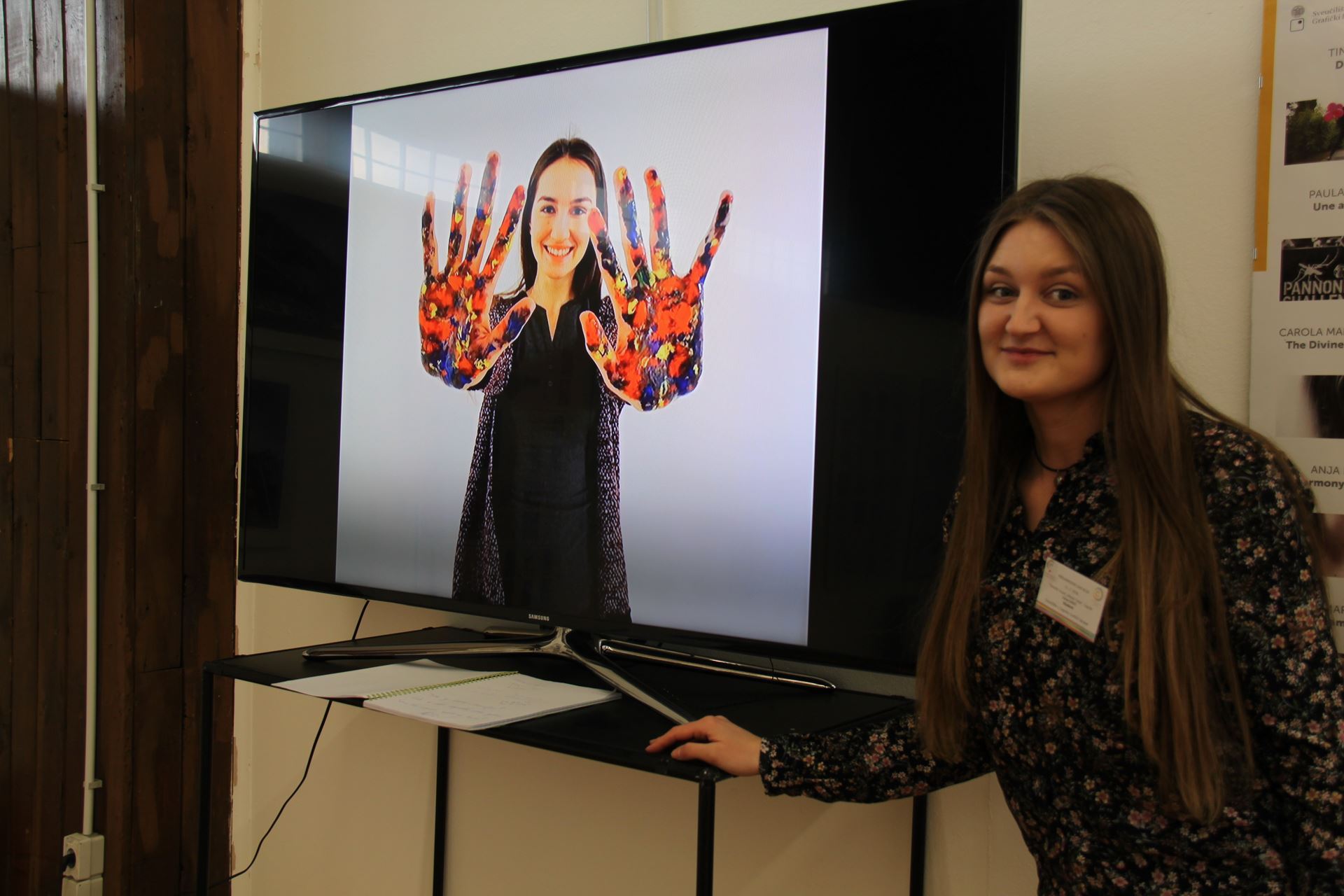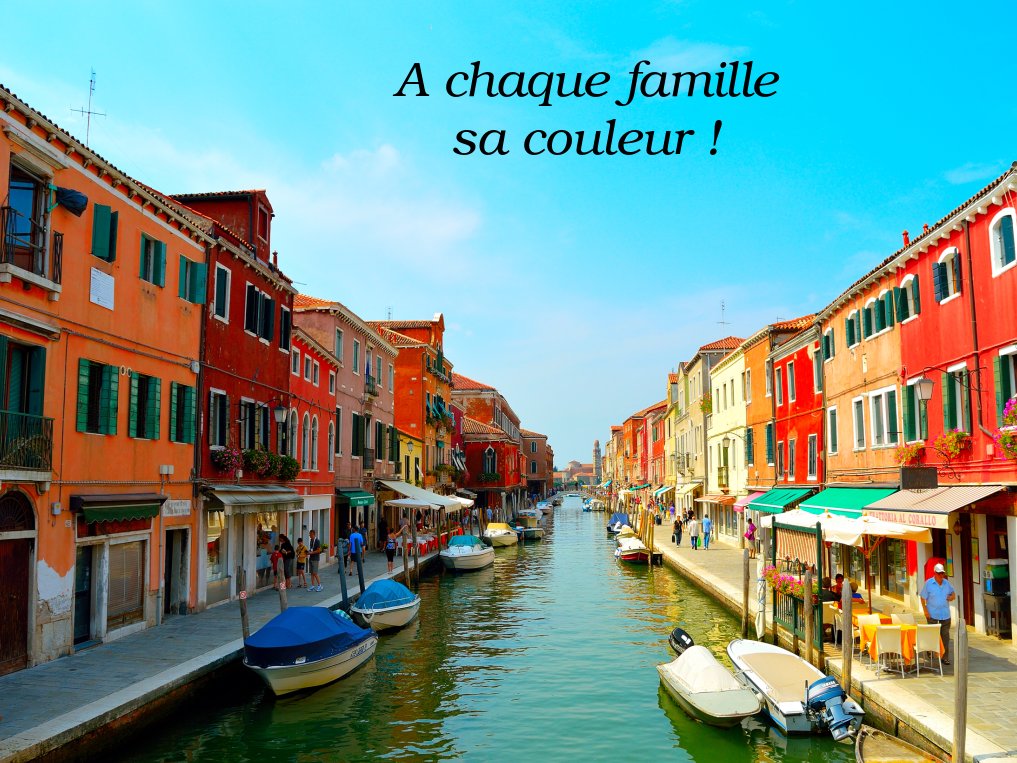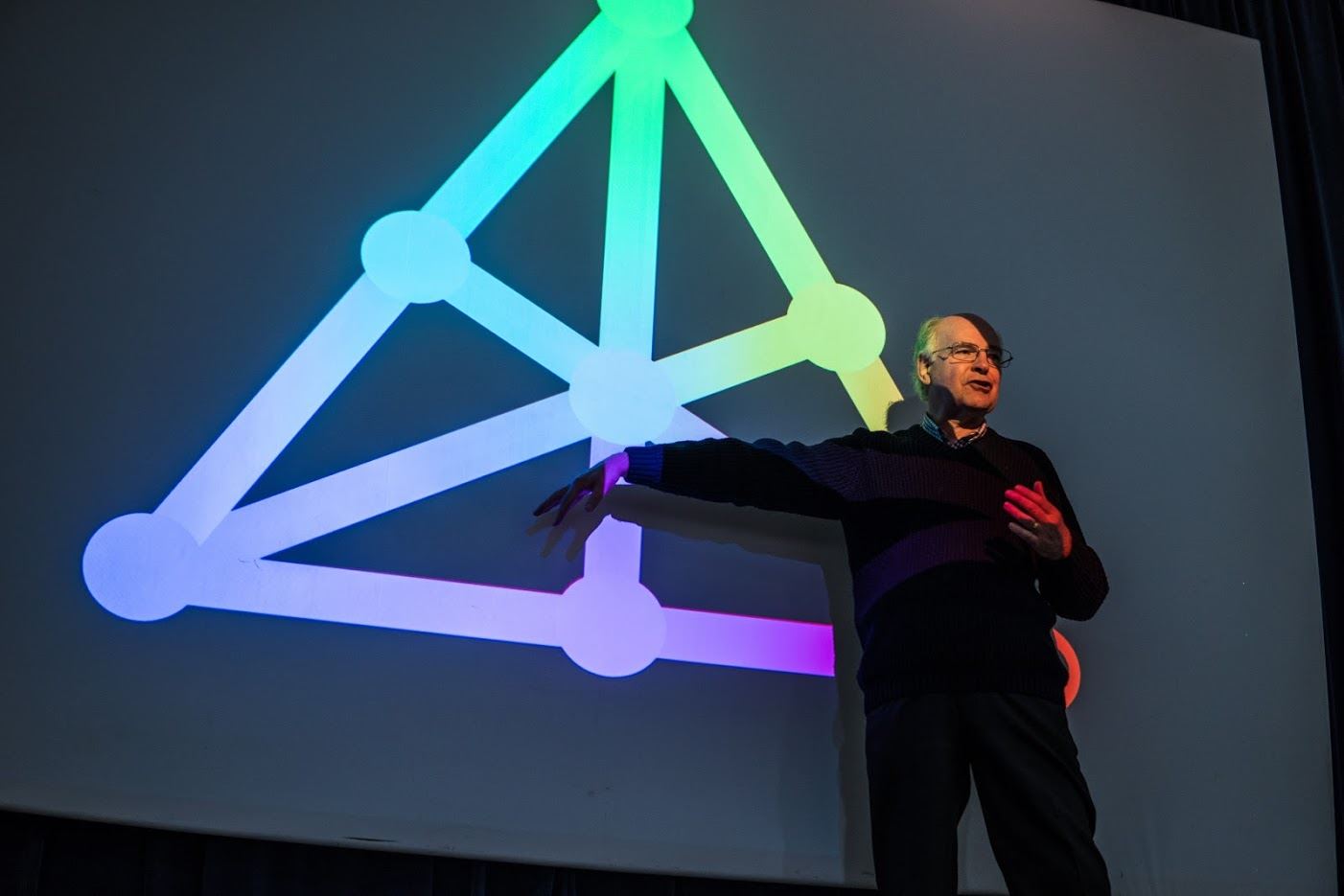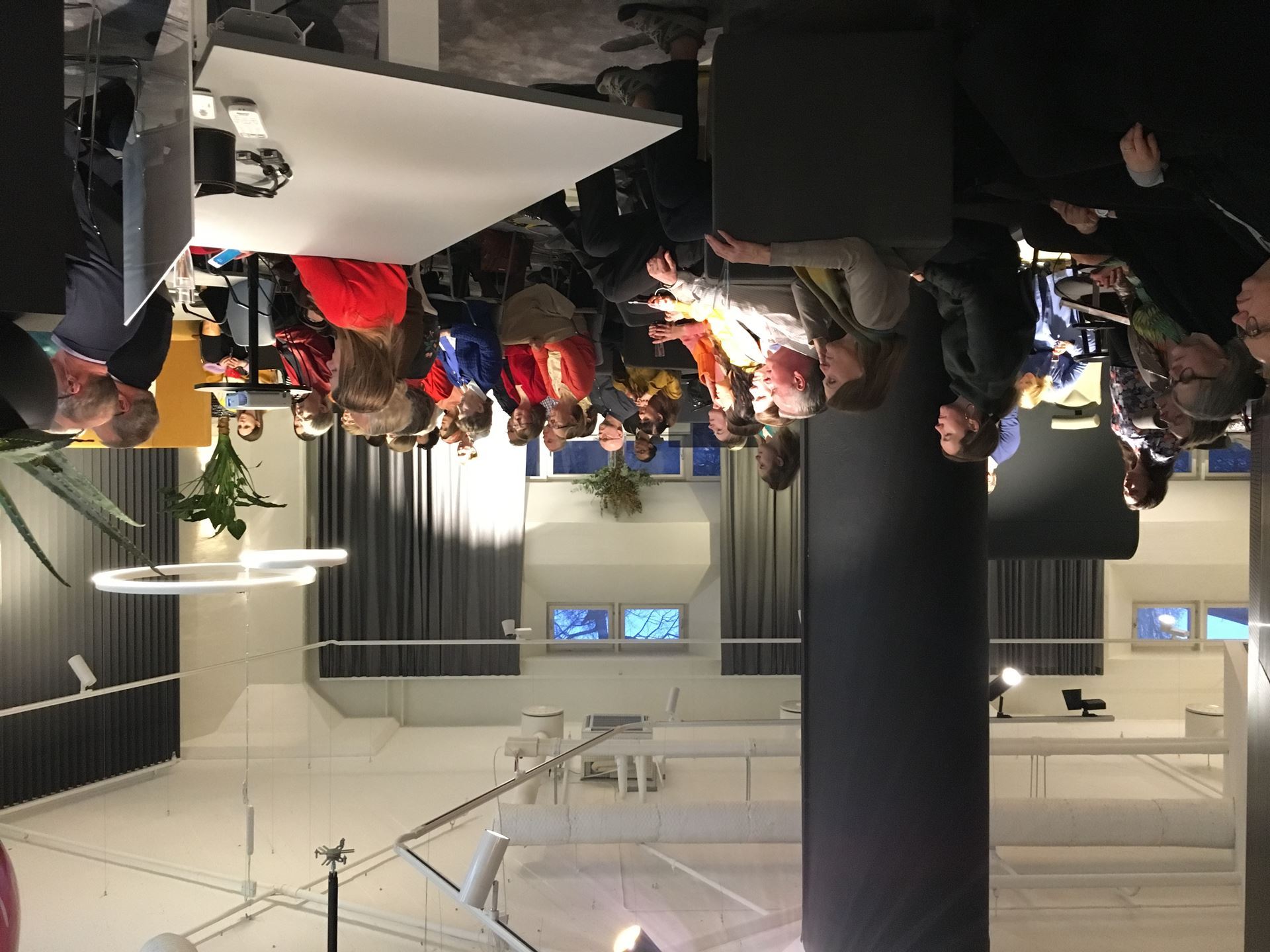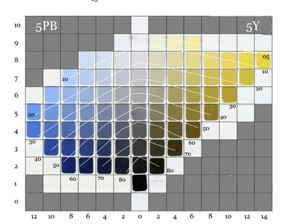| 2018 INTERNATIONAL COLOUR DAY See how some of AIC member countries celebrated ICD. |
| AUSTRALIA For ICD 2018 CSA NSW Division ran a one-day seminar, Colour Education - Past, Present and Future, at the International School of Colour and Design - ISCD in North Sydney, kindly made available by director Wendy Greenhalf. Eva Fay FDIA presented her exquisitely realized colour exercises done as a student at the Shillito Design School in Sydney in 1976-77 and traced many of Shillito's main teaching ideas to H. Barrett Carpenter’s Colour (1915) and Maitland Graves’ Art of Color and Design (1941). Dr David Briggs gave a repeat of his webinar, presented as the ISCC’s ICD 2018 event this year, on the attributes of perceived colour and their importance to painters. Annamaria de Cara FDIA shared ideas on what is currently lacking in colour education in Interior Design and Architecture and what could be done to rectify this, in a talk beautifully illustrated with exercises by her students. Finally, Dr Jean Pretorius conducted a practical session in which students explored the Munsell colour framework and its application to matching colours with artists' paints. In addition CSA President Judith Briggs organized a national photo competition on the theme Multicolourful Me and our Queensland Division celebrated ICD with a Colour Trivia event. |
| BELGIUM The Interdisciplinary Colour Association Belgium was founded in 2016. ICA-Belgium provides a platform to encourage interdisciplinary colour research and disseminates knowledge and studies in order to contribute to the development and challenges in the field of science, art, design and industry in relation to colour. She does this by organizing seminars, lectures, courses, forums, study groups and other. ICA-Belgium seeks close cooperation with existing national and international organizations. At the AIC-Congress 2017 in South-Korea, ICA-Belgium became the 28th member of the AIC. In the young existence of ICA-Belgium the board has organized a Colour Café and two symposia in 2017 and 2018. The COLOUR DAY 2017 symposium was a great success. With around 90 attendees from a wide range of colour disciplines, we had a full house at Designcenter Winkelhaak in Antwerp. The COLOUR DAY 2018 symposium hosted by ENSAV La Cambre in Brussels on 21th of March, brought together more than 100 attendees from a wide range of colour disciplines. Renowned national and international speakers shared their latest research and expertise on colour within the beautiful surroundings of the former Cistercian Abbey of La Cambre. With growing membership, ICA-Belgium is facing many exciting events in the coming years. |
| BRAZIL The Brazilian Colour Association, ProCor celebrated the 2018 International Colour Day with a half day event of a 100 places capacity, full auditorium, with the participation of colour related professionals, companies and students. The event had the sponsorship of: LECHLER DO BRASIL, LUKSCOLOR TINTAS, NCS, RAL|2AGOVONTI, RENNER SAYERLACK, SHERWIN WILLIAMS and SINTEGLAS ACRÍLICOS E COLAS ESPECIAIS. Mr. Narciso Moreira Preto, President of SITIVESP (São Paulo Owners of Paints Industries’ Union), opened the event. Then, Mr. Freddy Carrillo, President of ABRAFATI’s Directive Board (Brazilian Coatings Manufacturers Association), and also Executive President and General Manager at Sherwin-Williams Brazil, spoke to the audience. After him, Prof. Dr. Paula Csillag, President of ProCor talked about the significance of the International Colour Day and ProCor’s mission of bringing synergy amongst industry and academics. The first lecture of the event was about Emotions and the use of Colour in Architecture and Interior Decoration. After this lecture, there was a panel with 6 academic communications. Then, a panel of the sponsors was presented. After the lectures a brunch was served, for fruitful networking! |
| CANADA The Colour Research Society of Canada (CRSC) celebrated International Colour Day 2018 by co-sponsoring an exhibition with Propeller Gallery in Toronto, entitled Colour: What Do You Mean by that. The CRSC co-curators, Doreen Balabanoff, Robin Kingsburgh, Janet Read and Judith Tinkl, conceived of the cross-disciplinary exhibition, inviting artists, designers and scientists using or investigating colour phenomena, qualities, and meanings to consider: What is colour… frequency, wavelength, energy?… resonance, material, sensation?... perception, illusion, association?... emotive embodied experience? The question opened up diverse understandings and ways of knowing. The exhibition provided a rich variety of works, with conceptual, material, atmospheric and cultural exploration of colour meanings. Exhibiting Artists: Laura Bisaillon | Julia Buntaine | Chris Burke | Emily Carriere | Nicole Clouston | Jayanne English | David Griffin | Karine Guyon | Sara Hartland-Rowe| Mark-David Hosale, James Madsen & Rob Allison | Kathy Kranias | Marie Lannoo | Michelle Letarte | Art Lucs | Hameeda Mahmoud | Jessica Massard | Giuseppe Morano | Francis Muscat | Irma Osadsa | Frances Patella | Robert Quance | Jordan Shaw | Matthew Thomas | Dori Vanderheyden. Colour: What Do You Mean By That? Curators Talk and Social Event. Preceded by the CRSC AGM. (Propeller Gallery, Toronto). An Experiential Conversation about Colour - by Sharyn Adler Gitalis (CRSC Treasurer) with Pat Lawson. Lecture at the Illuminating Engineering Society, Toronto. |
| CROATIA The Croatian Colour Society (CroCoS), at the March 21st 2018, organized the 5th Annual celebration of the International Colour Day (ICD) that was held at the Technical Museum Nikola Tesla in Zagreb, in cooperation with the Faculty of Textile Technology, Faculty of Graphic Arts and Faculty of Architecture from the University of Zagreb, under the auspices of the Croatian Academy of Technical Sciences, The University of Zagreb, the Mayor of Zagreb Mr. Milan Bandić, the Croatian Textile Engineers' Association (HIST), and the Croatian Association of Former Students and Friends of the Faculty of Textile and Technology (AMCA TTF). The letter of support came from the Ministry of Science and Education. The International Colour Day in the Technical Museum Nikola Tesla was marked by a carefully designed program which emphasized interdisciplinary role of colour in everyday life as well as in science, art and design. As part of the one - day event, a professional - scientific symposium "Colour in Contemporaneity" was held as well as the exhibition and the interactive, educative workshop for children and adults. Parallel to the scientific and professional symposium "Color in Contemporaneity" there was an accompanying, interdisciplinary exhibition with interactive workshops and multimedia presentations. The idea was to show, on concrete examples, the width and the comprehensiveness of color as an intercept and band of not only the different scientific areas, but the science in general with the art and design. |
| FRANCE « From visual signals to language » gathered about 80 participants at Musée de l’Homme in Palais de Chaillot (Paris). 9 talks were given (in french) and have been video recorded. Organization and programme: Manuel Valentin (Musée de l'Homme) and Patrick Callet (CFC) Video stream segmentation and compression: Joël Randrianandrasana (CFC and University of Reims).
La production des couleurs dans le monde vivant/Color production in the living world (plants and animals), Laure Bonnaud-Ponticelli (MNHN) 2. Quelques réflexions sur l'harmonie et les couleurs en Chine, Philippe Denizet (CFC) 3. Donner leur nom aux couleur/Naming the colors - Color names designation from the colorimetric values, Robert Sève (CFC) 4. Les artistes contemporains du Bénin et la couleur, Cléophée Moser (CFC) 5. Tout sauf rose !, Kévin Bideaux (CFC) 6. Parcours de couleurs et significations au musée nationale d'Arabie Saoudite, Virginia Cassola 7. Couleurs, fonctions symboliques et langage, Valérie Bonnardel (CFC and Colour Group of Great Britain) 8. Les maisons peintes de Burano (Italie). Du village de pêcheurs au site touristique, Michèle Ballinger (CNRS and CFC) 9. Symbolique et langage des couleurs dans le patrimoine architectural des grandes villes de Russie, exemple de Saint-Petersbourg, Larissa Noury (CFC). |
| GREAT BRITAIN
International Colour Day 2018 coincided with the last day of the Third International Conference Colour in Film - the largest event in the Colour Group (GB)’s calendar. This is a truly international collaborative project between the Colour Group (GB), HTW Berlin, the University of Zurich, British Film Institute and Birkbeck, University of London and attracts speakers and attendees from all five continents. As always the programme - and most importantly that for 21st March - covered subjects that concerned both the technical and aesthetic aspects of the preservation and restoration of films, making it a true day of celebration of the multifaceted nature of colour in film. The second session of the day was the special focus of the International Colour Day celebration. It was entitled ‘Science, Technology and Aesthetics’ and was chaired by the Chairman of the Group, Elza Tantcheva-Burdge. Mike Pointer delivered the annual Colour Group (GB) Keynote Lecture. His presentation was centred on Uniform Colour Spaces, taking the attendees on a journey through the evolution and interpretation of colour spaces and the evolution of colour difference equations. Other speakers were the principal engineer of ARRI Cine Technik and a panel led by Sarah Street of the Eastmancolor Revolution project. |
| NORWAY The “Surfing colour III” seminar was held in Bergen at University of Bergen/ Knut Knaus Auditorium on the International Colour Day in collaboration with the Faculty of Art, Music, and Design at the University in Bergen. Professor Mette L’ orange (of Colour) was the main organizer. The seminar attended by approximately a hundred people included keynotes such as Copenhagen based designer Margrethe Odgaard, with a focus on colour and textile. Along with her own work she presented colour scales devised as a personal response to the lack of embodiment and materiality in conventional and comercial colour systems and palettes. Norwegian interior designer Thomas Gjetmundsen talked about the strategies applied to the bold colouring of thee exhibition walls of Lillehammer Art Museum echoing the items displayed by the Norwegian artisan and jewelry designer Liv Blaavarp. This was a solo exhibition in 2017. London based duo “Gilles and Cecilie Studio” presented their maximalistic and outgoing work covering a variety of fields, which concluded with the set design for Nissan TV commercial that was commission by Pulse Films.French PhD student at NTNU, Jean-Baptiste Thomas, presented issues concerning his work with colour and quantifying material appearance. With a background from nursing, Swedish researcher Helle Wijk talked about the importance of colour and light in the physical environment of a person-centered health care. In one of the afternoon talks, Norwegian artist and mural painter Bent Erik Myrvoll presented his own studies on lime work and mural-based art, and his collaboration with another Norwegian artist, Sverre Wyller, for the fresco in Løren sub-way station in Oslo. |
SWEDEN
The Swedish Colour Centre Foundation celebrated the International Colour Day on March 21st with over 70 participants. "The Changing Colours of Chanel's Lipstick Ranges from 1960” was the title of the first lecture by our invited guest lecturer Hélène de Clermont-Gallerande, head of research at Chanel Parfums Beauté in Paris. She is a passionate colour lover who have developed no less than 15 make-up patents. She talked about Chanel's lipstick colours and how they have changed depending on fashion and trends until today and showed this with the help of analyses in the NCS system. Our other invited Guest lecturer was the winner of the Prized Colour 2017. The theme was HE, IT, SHE AND COLOUR and the competition task was to create a colour design from a global, social and critical anti oppressive perspective. Isabel Tresse, HDK, Göteborg was awarded 1st prize for her proposal SOM OM (AS IF). The starting point for her project was the experiences and colour memories of her time in India, which are compared and transferred to another physical location in Sweden in Gothenburg – Kviberg. What happens in the meeting between my memories of Bengaluru India and the physical location of Kviberg, Sweden? What would Kviberg look like if it were, as if, in India? |
| UNITED STATES The ISCC celebrated 2018 International Colour Day by hosting a webinar given by David Briggs. Dr. David Briggs is a painter and teacher at the Julian Ashton Art School and the National Art School in Sydney, Australia. He has been teaching classes on colour for painters for nearly twenty years, including a long-running intensive five-day workshop, Colour, Light and Vision, and an undergraduate lecture course on the history of artistic colour theory and practice, Theories of Colour. David is the Chairperson of the New South Wales Division of the Colour Society of Australia and has contributed to publications including a chapter on colour spaces in the forthcoming Routledge Handbook of Philosophy of Colour. Some of his efforts to present current scientific understanding of colour in ways that are accessible and useful to painters can be seen on his website The Dimensions of Colour: http://www.huevaluechroma.com/. The title of David’s webinar was The New Anatomy of Colour. David showed how building on Albert Munsell's crystallization of the framework of hue, value (or lightness) and chroma, the science of colour appearance has developed a lucid systematics of perceived colour that includes in addition the attributes of brightness, colourfulness, saturation and brilliance (along with its inverse, blackness). Unfortunately, these later developments remain poorly understood by non-specialists, and are hardly known among painters, who could benefit greatly from applying them as a framework for solving colour problems. This webinar used slides and animations from David’s teaching materials to show how these seven attributes could be explained in ways that are intelligible to students, and how each attribute could be presented as a way of perceiving a particular property of lights or objects, instead of resorting to explanations invoking coloured wavelengths and receptors that “detect colours”, which only serve to undermine understanding of the fundamental nature of colour. |






